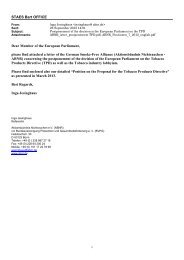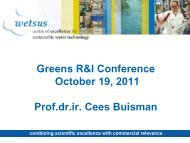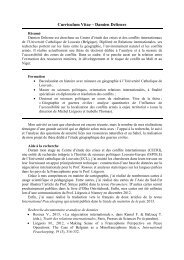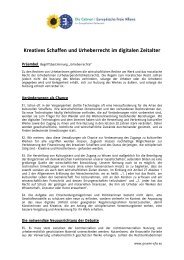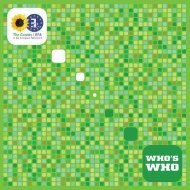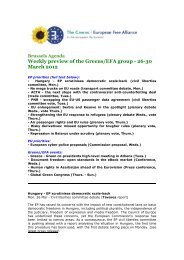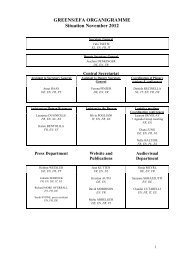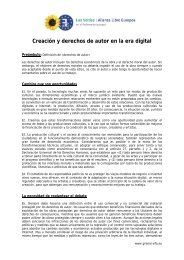Agro-Biotechnology: - The Greens | European Free Alliance
Agro-Biotechnology: - The Greens | European Free Alliance
Agro-Biotechnology: - The Greens | European Free Alliance
You also want an ePaper? Increase the reach of your titles
YUMPU automatically turns print PDFs into web optimized ePapers that Google loves.
Technical problems | Cloned farm animals - a ‚killing application‘? | 13<br />
Many of the observed adverse health impacts are summarised as Large Offspring<br />
Syndrome (LOS). Some effects of LOS are also observed, but at a much<br />
lower rate, in animals derived from embryo transfer in cattle and sheep (EFSA<br />
2008a, FDA, 2008). LOS has been especially observed in clones from species<br />
of cattle and sheep. <strong>The</strong>y often go together with late gestation and give rise to<br />
an increase in perinatal deaths, excess foetal size, abnormal placental development<br />
(including an increased incidence of hydrops 13 ), enlarged internal organs,<br />
increased susceptibility to disease, sudden death, reluctance to suckle and<br />
difficulty in breathing and standing. (EFSA 2008a)<br />
In sheep, cows and mice the following problems were detected (Gjerries &<br />
Vatja, 2005):<br />
• Placental abnormalities<br />
• Foetal overgrowth, prolonged gestation<br />
• Stillbirth, hypoxia, respiratory failure and circulatory problems, lack of<br />
post-natal vigour<br />
• Increased body temperature at birth<br />
• Malformations in the urogenital tract<br />
• Malformations in liver and brain<br />
• Immune dysfunction, a malformation of related organs<br />
• Bacterial and viral infections<br />
In contrast to the LOS syndrome observed in cattle and sheep clones, pigs produced<br />
by SCNT are more likely to show an increased incidence of intrauterine<br />
growth retardation and reduced weight at birth. (EFSA 2008a, FDA, 2008)<br />
<strong>The</strong>re is a lack of understanding of the underlying mechanisms and also there<br />
is no coherent definition for LOS. <strong>The</strong> observers agree that these effects are<br />
mostly relevant for the intrauterine 14 , the perinatal 15 and the neonatal period.<br />
But at a later stage in the first three to six months a high incidence of health<br />
implications has been observed by many authors. All these effects contribute<br />
finally to a low overall rate of success. This low rate of success is also shown in<br />
some of the publications cited by EFSA (2008a) or Gjerries & Vatja (2005):<br />
Panarace et al. (2007): of 3374 embryo clones transferred into surrogate dams,<br />
317 (9 percent) live calves were born, 24 hours after birth 278 of these clones<br />
(8 percent) were alive, and 225 (7 percent) were alive at 150 days or more<br />
after birth.<br />
Wells et al. (2004): of 988 bovine embryo clones transferred into recipient<br />
cows, 133 calves were born and 89 (67 percent) of them survived to weaning<br />
at three months of age.<br />
13 Abnormal accumulation of fluid<br />
14 during pregnancy<br />
15 time before and after birthing



